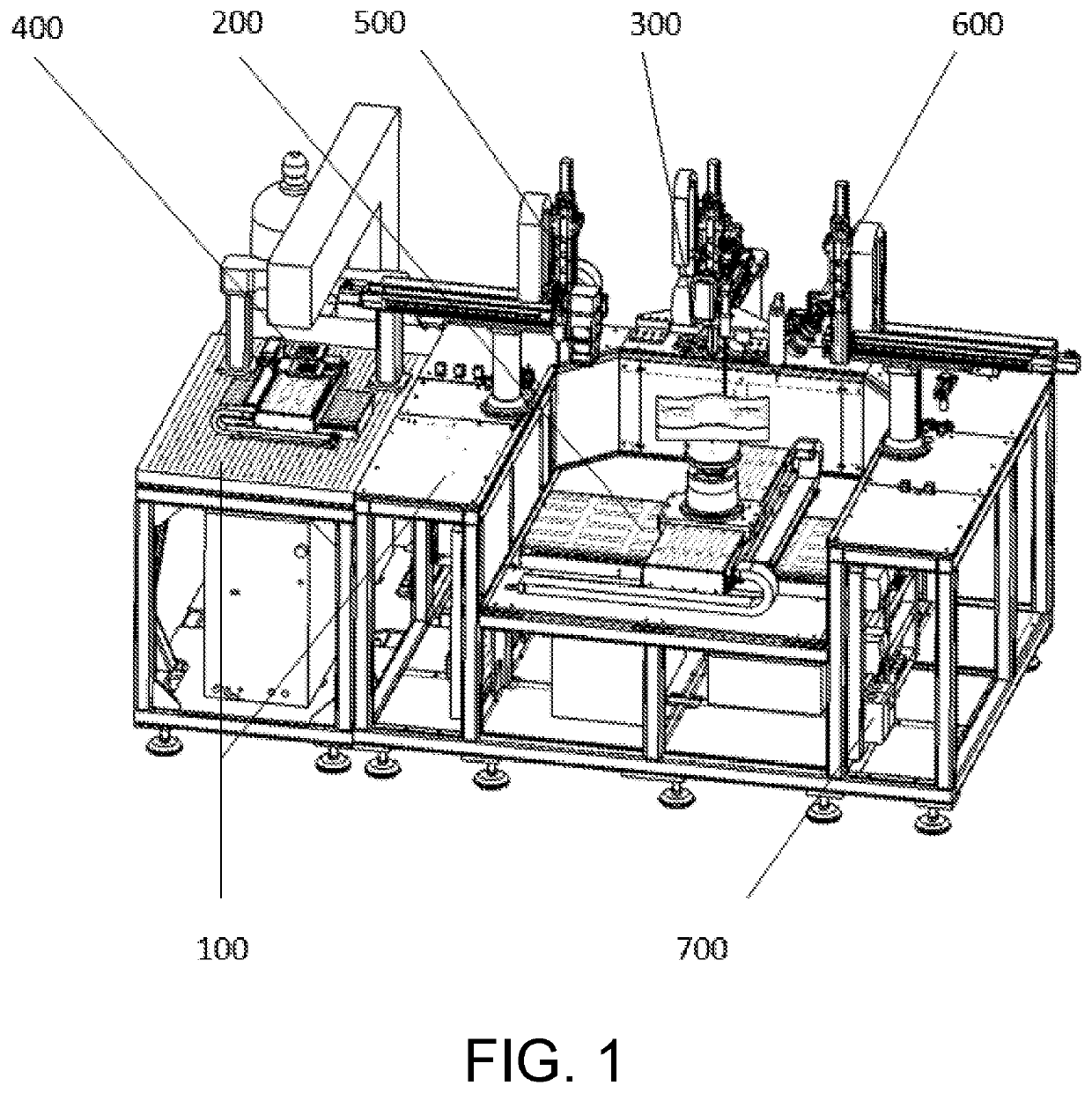Such planar manufacturing process is relatively complicated, which is not only applicable to various components with different sizes and characteristics, but also involves various process steps such as
photolithography, peeling,
transfer printing, packaging, etc.
At present, a relatively mature application of the above planar manufacturing process is still mainly aimed at fabrication of planar,
silicon-based microelectronic chips, but it is difficult to meet manufacturing requirements of electronic components with large areas and complex curved-surfaces.
Firstly, for a curved-surface positioning process which is a basis of the whole manufacturing process, the conventional micro-electronic system based on planar
processing mainly adopts a
visual positioning method, but a two-dimensional (2D) attribute of visual
image acquisition results in a fact that effective positioning is only implemented for a 2D plane, and a three-dimensional (3D) positioning requirement of a rigid / flexible curved-surface electronic system cannot be satisfied; moreover, the conventional measurement method mainly uses a coordinate measurement
machine (CMM) to measure the curved-
surface point by point, which inevitably brings about problems such as large measurement data, slow measurement efficiency, slow
data processing, large influence of light environment, etc.
Secondly, high-performance electronic components in the curved-surface
electronic systems need to be manufactured through a photolithographic process, and ultra-thin flexible electronic components need to be peeled off from a planar
silicon / glass substrate (a silicon-based microelectronic packaging process also needs to peel off small-sized microelectronic components from elastic blue films), a common peeling technology in the existing techniques mainly includes a thimble peeling technology, i.e. to mainly use a thimble to break the microelectronic component and a substrate at a boundary, for example, China
patent application No. CN201510531234.3, etc., discloses a multi-thimble peeling technique. However, since it needs to utilize a brittle characteristic of the microelectronic component and the substrate, it is hard to be applied to the peeling process of a flexible electronic substrate, and it cannot meet peeling requirements of high reliability and high compatibility of large-area, ultra-thin, flexible electronic components.
Thirdly, after the ultra-thin flexible
electronic component is peeled off from the
planar substrate, a transfer printing technology is required to transfer the flexible
electronic component from the
planar substrate to a curved-surface substrate; a transfer printing process at present is usually realized by controlling a relative
adhesion force between two interfaces of the
electronic component and the substrate and a
pickup device. A commonly used transfer printing method includes mechanical-
control transfer printing,
surface relief-assisted transfer printing, transfer head load changing transfer printing,
electrostatic adsorption transfer printing, etc. However, such type of flexible electronic transfer printing method is more suitable for a plane-to-plane transfer printing, and it is unable to realize a plane-to-curved-surface transfer printing with high precision. Moreover, Haoyi Wu, et al. proposed a curved-surface transfer printing method in “Conformal Pad-Printing
Electrically Conductive Composites onto
Thermoplastic Hemispheres: Toward Sustainable Fabrication of 3-Cents Volumetric Electrically Small Antennas”, which uses deformability of a soft transfer head to preliminarily implement the plane-to-curved-surface transfer printing, but the transfer printing process depends on the deformation of the soft transfer head itself, which is uncontrollable and excessive deformation may exacerbate
internal stress generated in the component during the transfer printing process; and Heung Cho Ko et al. proposed a transfer printing method for an
elastomer structure in “Curvilinear
Electronics Formed Using
Silicon Membrane Circuits and Elastomeric Transfer Elements” to mitigate the above problem, however, this method is complicated in process and cannot guarantee transfer accuracy and cannot be applied to higher temperature conditions.
However, the current
photolithography process needs to go through a tedious process of glue
coating, masking, photolithography, development, etc., and the whole process cannot be completed on curved-surface.
In addition, there are some deficiencies such as low jet printing resolution, easy blockage of
nozzle, incompatibility with high-viscosity ink, etc.
Namely, there is no ideal
inkjet printing technology currently that may be compatible with the high-viscosity nano-
silver paste and achieve conductive interconnect structures through curved-surface conformal jet printing.
 Login to View More
Login to View More 


